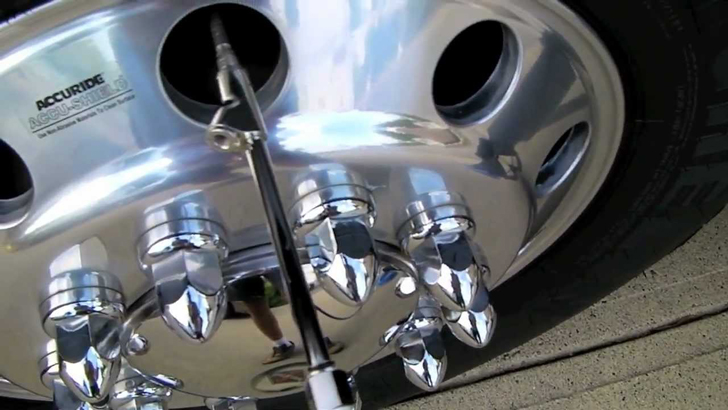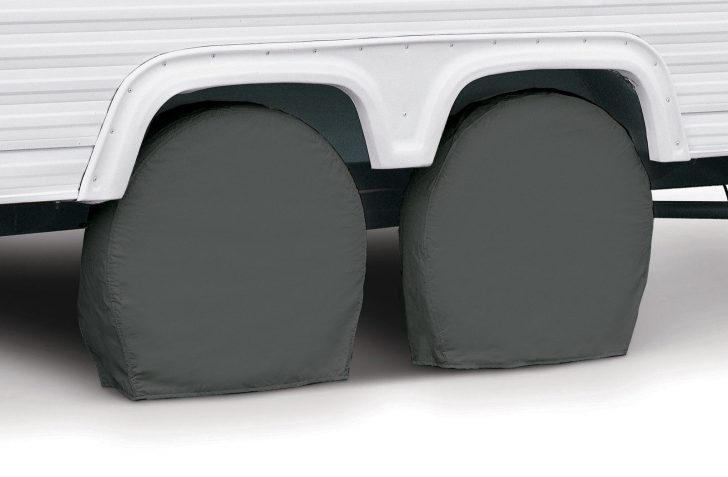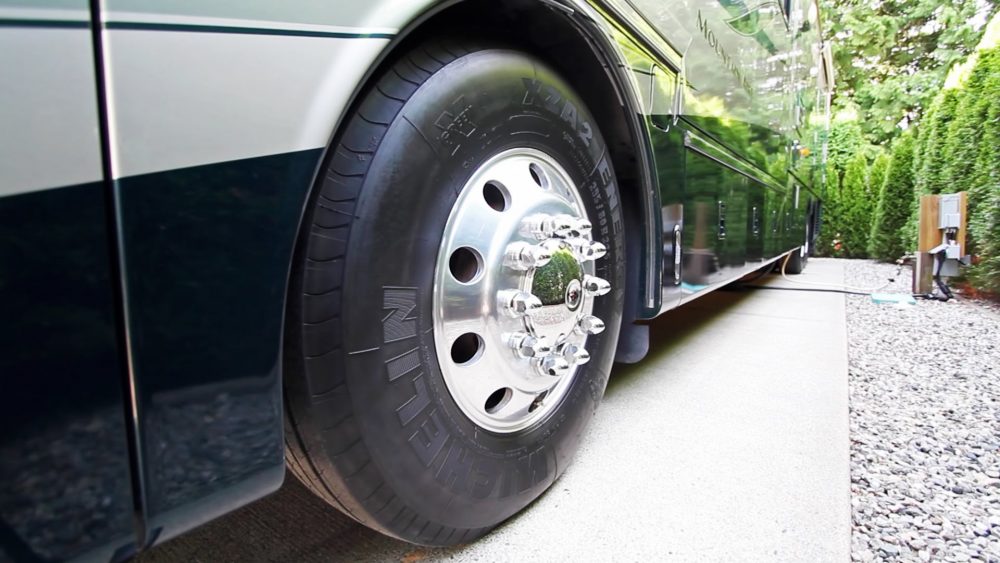Most vehicle owners don’t pay enough attention to their rv tires. In terms of dollars, tires will be one of the largest single investments you’ll make over the life of a vehicle. Tires are important on the family sedan, and they’re the equivalent of your home’s foundation on an RV.
These seven tips for RV tire maintenance can help keep you safe on the road, and ensure you get the longest useful life out of your tire investment.
1. Know thy pressure
Before every trip, use an accurate tire pressure gauge to ensure proper inflation of each tire, including any spares.
According to RV expert Mark Polk, the two leading causes of tire failure are improperly inflated tires and overloaded tires. Tires are designed to operate at a specific pressure, and driving your RV with under-inflated tires will cause the treads to break down much faster than they otherwise would.
Tires should always be filled to match the RV manufacturer’s recommended pressure. You can find this information in the vehicle’s owner’s manual or on the certification tag located in your RV.
Changes in temperature can greatly affect tire pressure. To obtain accurate tire pressure readings, measure tire pressure on cold tires.
2. Add tire pressure valve extenders
If you have trouble manipulating the small, stubby valves on your tires, tire pressure valve extenders may make checking tire pressure easier.
On vehicles with dual wheels or those with decorative hubs, it may be difficult to gain access to the valve stem. A longer (and firmer) metal valve stem will let you grip the valve firmly, and seat the tire gauge or compressor fitting snugly on top.
Extended tire pressure stems help make checking tire pressure less of a hassle. Photo by RV 101
3. Inspect the sidewalls
Before hitting the road, take a few minutes to check for uneven wear in the tire’s tread. Look for cracks and splits in the sidewall, as these are early signs of aging. You should replace any tire that has sidewall cracks in excess of 2/32″.

Check tire sidewalls to identify dry rot. Photo via Wikipedia
4. Pay attention to weight distribution and limits
Always be conscious of how much weight you’re carrying. In addition to staying below the maximum posted load limit, you should pack to distribute weight as evenly as possible, especially side to side, since this can contribute to uneven tire wear.
When having your vehicle weighed, check each tire position individually to ensure you are not overloading any single tire.
5. Cover RV tires while in storage
When your vehicle is in storage, if at all possible lift the tires and cover them. This prevents UV radiation damage and slows the aging process. Keeping them off the ground relieves pressure and prevents water or oil from degrading the tire’s exterior.
6. Rotate tires regularly
Just as on your daily vehicle, you should also rotate the tires on your RV. Rotating tires encourages even wear, and also presents an opportunity to closely inspect each tire for damage.
Goodyear, in their Recreational Vehicle Tire and Maintenance Guide, says that,
Every RV and trailer is unique, so consult your vehicle owner’s manual for rotation recommendations for your vehicle.
7. Replace tires as needed
In general, most tires over six years old should be replaced. Even if they appear in good condition, the stress of carrying a loaded RV is much greater than that of a standard passenger automobile, and driving on sketchy tires is not worth the risk!
Following these tips for RV tire maintenance won’t make your tires last forever, but they can help to maximize the time in between tire purchases—saving you money. You’ll also minimize the risk of suffering a catastrophic tire blowout.
For more information, see How To Choose The Best RV Tires
YOU MIGHT ALSO LIKE:
- Peak inside this Uniquely Converted School Bus
- 10 Things To Consider When Choosing an RV Park
- Things to do near Goodman, MO



